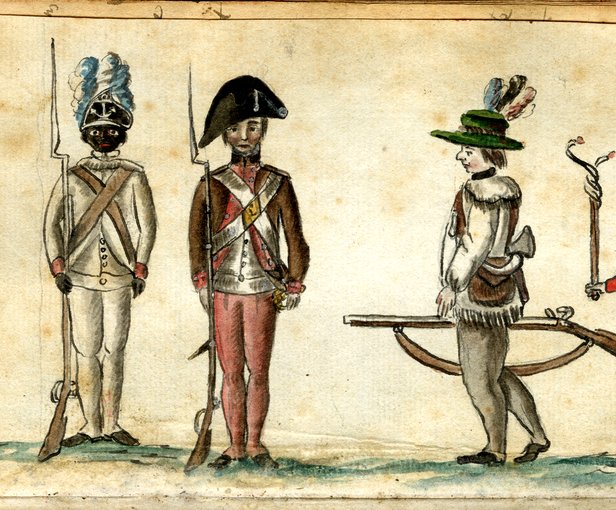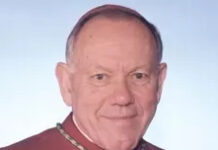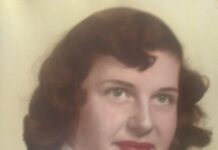
PROVIDENCE – History shows Rhode Island raised great rebels for freedom, and the northwestern corner of the state was no exception.
Each year, Rhode Island officially remembers and celebrates the first Independence Day, which happened on May 4, 1776. Today, the remembrance is a mere shadow of what it once was, with little fanfare.
Residents of northwestern Rhode Island of 1776 were much involved in the Revolutionary War.
Those who served and resided in North Smithfield, Burrillville or Glocester included Edward Salisbury, who, “served as a minute man, answering the alarm at Providence, R.I. He was engaged in the service of his country through the entire war. He helped in building Fort Stanwix,” according to a History of Burrillville, R.I.
At the time, Burrillville was still part of Glocester.
Seth Ross, another son of Burrillville was in the war, as was Doctor Caleb Fiske from Pascoag, a surgeon under General Sullivan’s command.
Christopher Sayles was born in Glocester, raised in Burrillville, and served the American military at Newport, as stated History of Providence County, Vol I & II, Richard M. Bayles from 1891.
Lt Colonel Peleg Arnold “served as a state representative, and in 1780 was colonel of the Second Regiment of the Providence County Militia in the Revolutionary War,” explains North Smithfield Heritage Association president and local historian Richard Keene.
Keene noted that the NSHA recently partnered with the Rhode Island Daughters of the American Revolution on a research project to identify additional local Revolutionary War Veterans.
“After the war, Arnold was one of the founders of the Providence Society for the Abolition of Slavery,” Keene said. “He was a Federalist and Rhode Island delegate to the Continental Congress in 1787, and in 1795, he was named chief justice of the Rhode Island Supreme Court, retiring in 1812. During his life, Arnold opened and kept the Peleg Arnold Tavern, still standing in town.”
North Smithfield was home to soldier Samuel Aldrich III, a Captain in the Colonial Militia. and his son, David, who lived from 1753-1780, was a drummer in Captain Stephen Whipple’s Smithfield Company, Spencer’s Expedition in October 1777, and ensign in the Second Company Militia in Smithfield in May 1778, states Keene.
Another champion of freedom was Captain James Buxton, “enlisted and served in the local Militia in nearby Massachusetts in January of 1777.”
“Ensign James Buxton is later found listed, in Colonel Tupper’s regiment, among many soldiers who took an oath of allegiance to the USA at Valley Forge on Feb. 3, 1778. He was in the roster as a Commissioned Officer in the Battle at Saratoga,” said Keene.
Other illustrious activities of Buxton include serving in the Continental Army. According to Keene, Buxton “served from 1777-1782 and held the ranks of Ensign, Lieutenant, and eventually Captain. He returned to Smithfield after he was discharged from active military service. An Ensign at that time was a Commissioned Officer in the Continental Army and was the Equivalent of the rank of a Second Lieutenant.”
Further, “this is the rank that James Buxton held at Valley Forge from December of 1777 to June of 1778. James Buxton can also be found in the listing of soldiers in the volume of papers, Vol. 1-16 of George Washington, at the University of Virginia Library of the Revolutionary War papers.”
Keene notes that from 1731 to 1871, the town of Smithfield included North Smithfield, Lincoln and Woonsocket, and lists other North Smithfield Revolutionary War veterans: Walter Allen; Joel Bradford; John Earl; Chad Smith; Captain Samuel Stimes; Israel Aldrich; Amos Aldrich; Jonathan Andrews; Dr. William Arnold; Elisha Bartlett; Salisbury Freeman; Elijah Smith; Joseph Matheweson; Jashub Wing Sr.; Augustus Aldrich; Captain Caleb Aldrich; Caleb Aldrich Jr.; Joel Aldrich; Naaman Aldrich; Thomas Aldrich; and Oliver Smith.
“Revolution veterans seem to be forgotten,” said Edna Kent, honorary town historian for the town of Glocester and founding member of Glocester Heritage Society. Kent is author of three books on history of the town, including Glocester, Rhode Island in the Images of America Series.
Kent tells tales of heroic people of the past. For instance, Governor Nicholas Cooke sent a message to Judge Timothy Wilmarth in Glocester, calling men to action when a, “large fleet of the enemy,” arrived in Narragansett Bay. Apparently, Cooke hadn’t realized just how many British would besiege the Rhode Island colony, says Kent.
Another story, says Kent, is “a couple of Glocester young men could hear the sound of gun fire from Bunker Hill. They took up their rifles to see what was happening.”
Those two young adults who joined the battle at Boston were Anan Winsor and William Arnold.
Also among those who took up the call of freedom were locals Nathan Burlingame and his 16-year-old brother Esek Burlingame. Another was was of independence soldier was James Martin, who was in the mounted infantry battalion.
“Bill Brown and I are flagging Revolution and Civil War graves in Glocester, and every year we seem to discover more,” Kent said. “We want to get to them all.”
Brown and Kent are steadfastly searching for, finding, and cleaning off the graves of long lost soldiers.
Kent, Brown, and other volunteers are placing an American flag on each grave. Kent researches history, and the crew also does the heavy labor, forging their way into private cemeteries, work that often includes the arduous task of making their way through tangles of forest to neglected plots where the graves are awaiting discovery.
Rhode Island, it seems, is an important place in the world in the history of freedom.
In 1636, more than a century prior to the war for independence, Rev. Roger Williams, persecuted for his ideals, including that all people are equal and have the right to their own beliefs, was exiled from Massachusetts Bay Colony.
Williams escaped in winter into the wilderness assisted by Native Americans, as the story goes, and came to the area of the Seekonk River, where he established with fellow settlers a community based on, “an egalitarian constitution providing for majority rule in civil things and liberty of conscience,” and named the colony Providence Plantations, “believing that God had brought him and his followers there,” Familypedia.com explains.
Rhode Island and Providence Plantations is also said to be the first colony to declare independence from England.
Jonathon Arnold, statesman and physician, wrote the document, and during the war would lead an army hospital, and after was a member of the RI Confederation Congress.
“The declaration was one of the most daring acts of the times and paved the way for the national one of the July following,” said another Arnold, historian James N. Arnold, in a speech May 4, 1907 at Wickford titled, “The reasons why Rhode Island declared her independence of Great Britain, May 4, 1776.”
“A day like this, May 4, deserves the honor that we pay to it. It is well to publicly recognize the most glorious deed ever done by a General Assembly. These men were indeed Freedom’s sons,” James Arnold said.
Rhode Island gave birth to many freedom-fighters, some legendary names among them Nathaniel Green, Esek Hopkins, Steven Hopkins, William Ellery, and others not as well-known.
North Smithfield’s James Brayton was a hero who came from adversity. He, “was born in Newport to slave parents James Easton and Rose. When his father died, Rose was sold to Preserved Brayton in Rehoboth. Mrs. Brayton eventually convinced her husband to free all their slaves. They were all given money, the family name and the choice to leave or stay and work for pay,” explains Keene.
Brayton served as a Private in COL Archibald Crary’s Regiment of Infantry during the Revolutionary War. By 1777, Brayton had moved his family to Union Village and built a house where 257 Great Road now stands.
Well into the 20th century every school child knew by heart the names, heroic deeds, and the beliefs of those 18th century people who put their lives on the line for freedom. In fact, the state of Rhode Island had grandly and proudly celebrated RI Independence Day since 1908 as result of a twenty-five year campaign of James S. Slater of Smithfield for such a remembrance. Among the activities: a thirteen gun for the thirteen colonies salute is required at noon on May 4, and public schools provided patriotic education and exercises. In 1936, May 4th was made a state holiday.
Historic booklets contain the exercises for the celebrations of the day; for example, for 1910 there were 64 pages of prayer, benediction, songs, a poem, speeches, and an historical address, and a reading of Jonathon Arnold’s, “The Act Declaring Our Independence.”
Rhode Island’s Jonathon Arnold’s act of May 4, 1776, read at the original State House on South Main Street in Providence, was passed by the Rhode Island General Assembly and signed by Gov. Nicholas Cooke.
The act reads, in part, of George the Third, King of Great Britain “instead of protecting, is endeavoring to destroy the good people of this Colony, and all of the united Colonies, by sending fleets and armies to America to confiscate our property, and spread fires, sword and desolation throughout our country, in order to compel us to submit to the most debasing and detestable tyranny; whereby we are obliged by necessity, and it becomes our highest duty, to use every means e with which God and nature have furnished us, in support of our inviolable rights and privilege, to oppose the power which is exerted only for our destruction…”
Two hundred forty-five years ago, men answered the call of liberty. Today, historians and others dedicated to remembering their sacrifices and what that meant are honoring these men.







